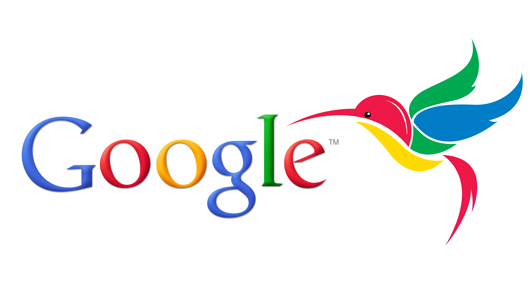
Hummingbird is Google’s new search algorithm, the biggest one since 2010, when Caffeine was rolled out. It is a more major move compared to Panda and Penguin (which were spam-related). Hummingbird is like a total overhaul of Google’s entire search algorithm.
Introduced and announced on Google’s 15th anniversary last September, Hummingbird is named after birds that flap their wings fast. It intends to deliver results quickly and efficiently using longer words, phrases or questions (as opposed to keywords). While this means better results in just a few clicks, SEO insiders also point out that Hummingbird can bring a number of changes for the industry and its practitioners.
The Effects and Changes
Some say that Google’s newest update acts like a human in the way that it answers queries. Unlike the old system, it considers question, phrase or statement and does not focus only on a keyword – or some keywords. In the past, when you typed in a phrase like “new seo techniques”, Google will examine all three words individually. With the new update, what you type in is considered as a whole. So if you type “give me the birthday of President Obama”, it will look at your request as a “package”, not as a group of words set together in a phrase. Thus, you get more detailed and efficient results. It’s almost like having a conversation with someone online.
What does this mean for SEO? What changes should we be seeing by now?
- Goodbye Keywords?
Because Hummingbird deals more with questions, statements and long queries, it looks like keywords are going to be set aside now, right?
Well, not really. All that you need to do is go for long-tail phrases instead of focusing on a keyword or two. This won’t be problem if you use legitimate SEO tactics, right?
Also, keywords will always be useful because they help with a site’s content semantic analysis.
- Content is King, now more than ever.
Now more than ever, it is important to come up with relevant, substantial content. And in order to adapt to Hummingbird, content should now be generated towards answering possible queries of your visitors. Thus, you should be thinking of possible questions about your product, service or project before you finalize your website’s content format.
Focusing on the five Ws (who, what, when, where and why) of your product, service or project will greatly help you come up with effective content.
- (Not Provided)
Google recently made changes to organic searches. It is now difficult for SEOs to find out what keywords visitors use to get to their website from Google Search. This is because every search activity is now encrypted; (Not Provided) is now the name of the game because organic searches have been made secure. SEOs can no longer get keyword information and details. So, if you used to see keyword data in detail like this:
- guitar store arizona 55
- arizona guitars 35
- guitars made in arizona 50
with 100% (Not Provided), this is what you will see:
- (not provided) 1,585
This is a big change because majority of SEOs who practice legitimate or white hat strategies depend on keyword analysis to find out what works for their visitors or audience.
- Hello, Conversational Search!
Google first installed the microphone on its Search bar in 2011. However, it is only now that Conversational Search is being fully implemented both ways. In other words, Google can also use the microphone when it returns the results of your search. With the previous technology, smartphone users doing research can ask Google to search for whatever information it is they need. The results are then shown on the smartphone’s screen. This new technology has a “Search by Voice” function, which will make you hear a computerized voice giving the answers to queries. The answers will also be flashed onscreen.
For example, when you ask “who is Harry Houdini?”, Google will answer by giving you information about Houdini (his complete name, his birthdate and other personal data). All this information will also be shown on your screen. Again, it’s a query-based search, so asking the right question/s will help give more efficient results in the fastest time possible.
- The Knowledge Graph
Since Hummingbird now allows Google to answer complex queries, the Knowledge Graph is put into good use. This means that you’ll see images on your screen of whatever it is that you are searching for. The images come with what is called an “information card” that’s displayed on your screen. If you type in “Kimi Raikkonen”, the Knowledge Graph will come back with his complete profile. So you’ll see not only photos of Raikkonen, but also details about his birth, his Formula One standing, who his spouse is, as well as his parents’ complete names.
Depending on what you are searching for, you may also see some columns (like a 2-column graph if you’re trying to compare two products).
What SEOs Can do to Survive Hummingbird
Hummingbird does not really change a lot of things for SEOs. The major changes that many are worried about are focused on keywords. SEOs who are not use to producing good content are also predicting problems. There are some things that can be done, though, to make sure that you survive Google’s Hummingbird.
- Find other ways to gather relevant keyword information.
Some examples:
- Although it is not 100% accurate, using Google Webmaster Tools can still help.
- Bing and Yahoo aren’t as big as Google when it comes to traffic, but you can still use them to gather keyword information. There will still be visitors to your site coming from these two (and other) search engines.
- Pay attention to what’s making news and waves at Google Trends.
- Be willing to spend some money and sign up for Google’s Adwords PPC (Pay Per Click) Program.
- More relevant, helpful content.
Create content according to what you believe your customers will want to know about your products, services and projects. You need to come up with content that answers your visitors’ needs. Your content should not only be for SEO purposes, but also for information. It should be useful (and helpful of course).
Use a variety of mediums in delivering your content. Some examples include videos, posters/infographics, audio, slides and webinars.
Additionally, add references and links from websites of good reputation. Linking all content with your profile on Google + will also be a big help. Share and distribute your content so that you’ll get a wider reach.
- Take note of using form-based questions, specifically the five Ws: who?, what?, when?, where? and why? – when creating your content.
While it’ still too early to tell whether Hummingbird will drastically change things for SEOs – positively or negatively – it pays to be informed and prepared. As long as you don’t practice Black Hat SEO, you really have nothing to worry about.
















